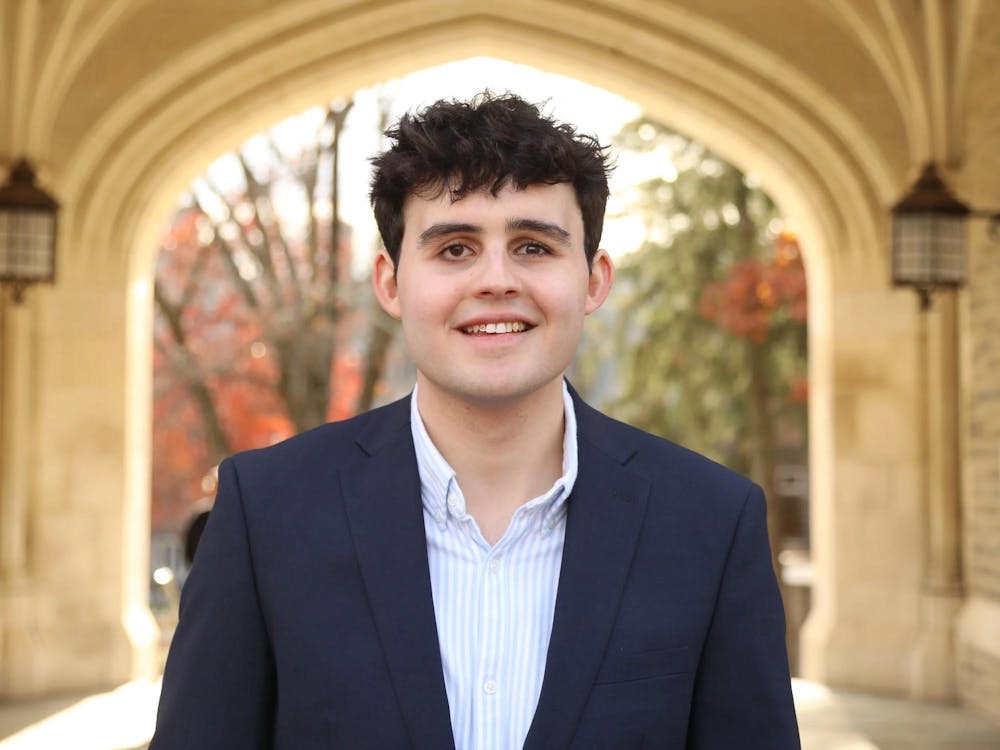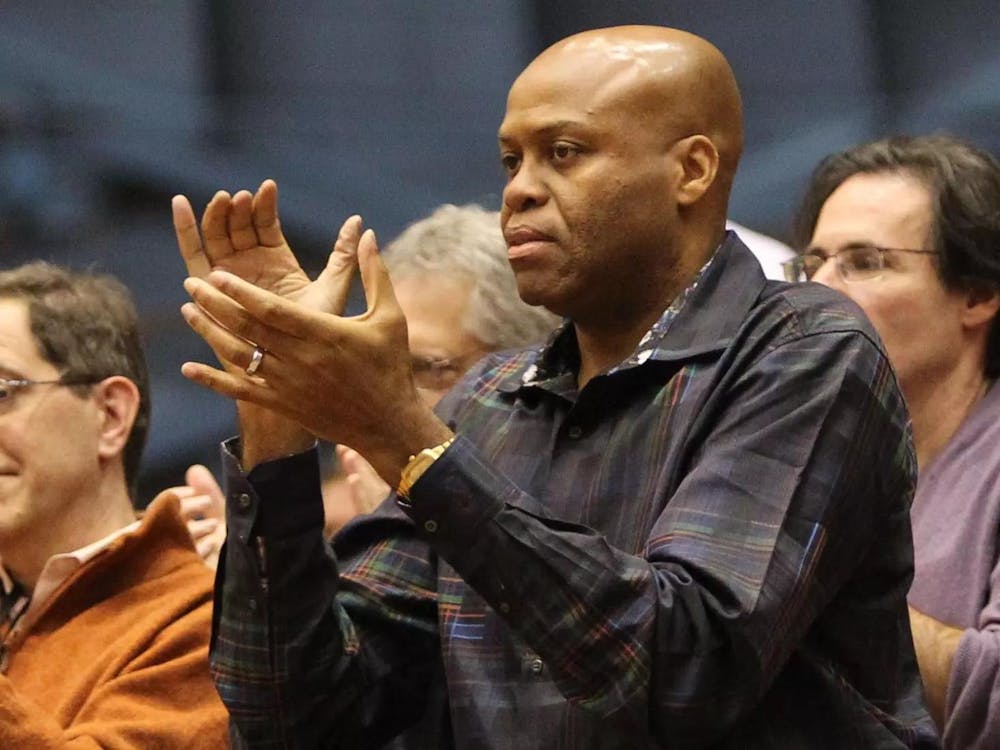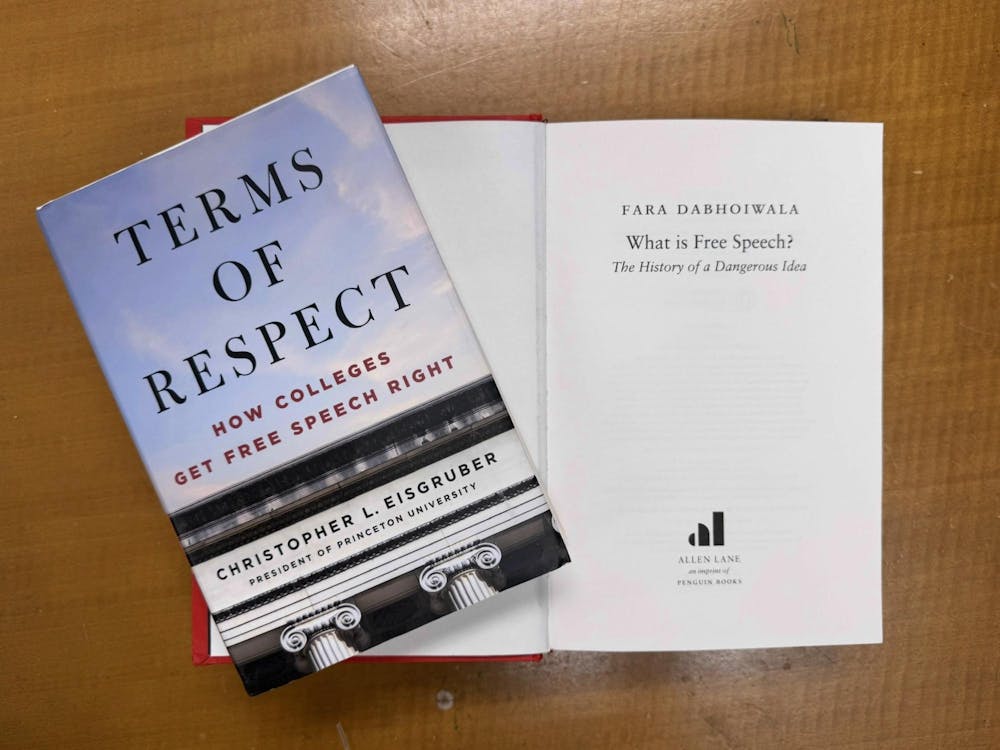For the average high school junior, touring 10 colleges during Spring Break can be a confusing experience. After the third or fourth university, all the schools seem to blur into one, with no particular one appearing unique from the rest.
But they are not the same, and one of most fundamental characteristics that distinguishes them is the different curriculum requirements at each school.
Curriculum programs around the nation are in flux, however. Earlier last year, students at the University of Chicago — a school known for its stringent core curriculum — were up in arms over the administration's suggestion to relax the requirements. The University of Pennsylvania and Harvard University both announced changes to their curriculums this year. And at Princeton, the Class of 2000 will be the first to graduate under the new distribution requirements approved in 1995.
Instituting changes in a school's requirements can significantly alter its reputation. The liberal arts college at Columbia University, for example, attracts many students with its 83-year-old core program, in which all students must enroll in mandatory courses.
Specific graduation-requirement programs fall mostly into three categories — a core curriculum, a distributive system and a program with no requirements.
At Penn, the arts and sciences college faculty moved toward a quasi-core system last December when it approved a major overhaul of the school's graduation requirements. Two-hundred freshmen next year will participate in a pilot program that, if successful, will require all students by 2005 to complete one course in each of four interdisciplinary areas by the end of sophomore year. In comparison, the current distributive requirements stipulate that each student take 10 courses in seven disciplinary areas by graduation, a program similar to Princeton's.
Frank Warner, the chair of the committee that proposed the changes, said that, though the current distributive requirements were working, the faculty believed the system could be improved. "We did not approach this curriculum revision from the 'what's wrong with the current curriculum' point of view," Warner said. "Our current undergraduate requirement is quite good. But it was implemented 13 years ago, so it is time to see if improvements can be made."
Students will be able to take six more electives as a direct result of the reduction in required classes from 10 to four, and because of their interdisciplinary nature, courses are being developed to fulfill the requirements. Next year, one team-taught course in each area will be available both semesters, according to Warner.
Despite the creation of courses specifically for the new requirements, the new curriculum is not a true core program, Warner emphasized. "We make no attempt to define a specific body of knowledge that all students must acquire," he explained. "New interdisciplinary courses will be designed for the four general requirement categories . . . but there will be a variety of different courses in each category."
In the Ivy League, two schools maintain core curricula. Columbia has a strict core that requires students to take seven specific courses — two-course sequences examining literature and contemporary civilization and semester-long courses in art, music and expository writing. In addition, undergraduates must enroll in two courses studying major non-Western cultures, three science or math courses and a four-course foreign language sequence.
Hamid Dabashi, last year's core curriculum committee chair, said the 83-year-old program provides flexible stability for the college. "It engages faculty and the student body in dialogue. At the same time, it is not sketched in stone, but is a living organism that you don't have to carry as a heavy load," Dabashi said. "It cultivates critical judgement before a student absorbs his specialization."

Though the core requirements still must be fulfilled before a student enters his major, the curriculum has changed with time, Dabashi noted. "There is persistent dialogue among colleagues about the core curriculum. Student uprisings a couple of years ago forced a reexamination, for example," he said, alluding to the student protests at Columbia that resulted in the addition of the two-course requirement on the study of non-Western civilizations.
Like Columbia, the arts and sciences college at Harvard maintains a variation of the core program in which students must complete eight of 11 disciplinary areas that are most remote from their concentrations. Students choose from courses developed specifically for fulfillment of the core requirements.
This year, as a result of a complete review of the program, a faculty committee added quantitative reasoning as a core area.
"Math is a basic core education goal, and the core was not quite meeting it," said Sidney Verba, the committee's chair.
In addition to implementing the new requirement, the committee made it easier to develop courses for the core curriculum. A core course must be broad and assume no prior knowledge of the subject, and the change permitted more narrow courses, Verba said.
Aside from fulfilling the core requirements, a Harvard student must enroll in a first-year expository writing course, a two-semester foreign language sequence and a three-year concentration.
While Columbia and Harvard specify mandatory classes for students, Brown University does not. Except for the completion of 30 courses, students at Brown do not have to fulfill any general education requirements for graduation.
College dean Karen Romer explained that students at Brown are responsible for their own intellectual development and must be active participants in the planning of their education. "[Our belief] is a philosophy of education that situates the student and the questions they are asking at the center of the educational process, and that believes that learning is particularly powerful when the learner is an active participant in shaping their learning, especially as a young adult," she said.
This philosophy extends to Brown's grading policy, Romer said. Brown students may elect to take all their courses on a "satisfactory/no credit" basis — similar to Princeton's Pass/D/Fail option. One-fifth of all courses are taken on such a basis — down from a quarter 10 years ago, according to Romer.
Dartmouth College's distributive requirements — 10 courses in eight areas — may be akin to Princeton's, but the similarity ends there. Dartmouth students must attend a summer term, pass a swimming test and attend a freshman seminar.
Dartmouth's academic calendar consists of four quarters, and students must complete 35 courses in 12 terms of their choice; however, they must enroll in the first three terms of freshman year, the last three terms before graduation — and the summer before their junior year. This enrollment pattern is aptly called the Dartmouth Plan.
"The D-plan offers students a great deal of flexibility and choice in the college career. For example, many of our student-athletes are able to participate in study abroad and internship programs because they are able to coordinate their off-season terms with these options," said Gail Zimmerman, Dean of First-Year Students. "Having a full class on campus during the sophomore summer increases class community. Faculty also benefit from the D-plan with opportunities to schedule their own leave terms and sabbaticals to offer them extended periods of research time not often found at other institutions on semester systems."
But perhaps most conspicuous is Dartmouth's physical-education requirement. Students at Dartmouth must complete three terms of physical education and pass a swimming proficiency test.
"A sound body goes with a sound mind. Physical activity and life skills are an essential part of a liberal arts education," Zimmerman reasoned.
This requirement is a leftover of physical fitness and swimming proficiency requirements that many Ivy League schools had in the early 20th century. Princeton, for example, had a two-term physical-education and swimming-test requirement until 1993.
At Columbia — the only other Ivy with such a requirement — the physical-education classes and swimming test create unity among underclassmen, according to Dabashi.
At Yale University, the 36-course graduation requirement — which is slightly higher than in most liberal arts programs — is a tradition, according to associate college dean Penelope Laurans. "The [requirement] could certainly be called into question today. But, like the Harvard tutorial or the Princeton preceptorials, the administration has shown itself to be committed to it."
Most language and science labs are worth 1.5 classes, however, she added.
Yale undergraduates must also complete the intermediate course of a foreign language and fulfill distribution requirements for three out of four areas of language and literature, humanities, social sciences and sciences and math.
Distribution requirements are better for Yale than core requirements, Laurans said. "I suppose there is the kind of ethic belief at Yale that you don't force people to take courses they don't want to," she said, noting that students do not have to pick their courses until after a two-week shopping period in the beginning of each semester. "You don't force students to take courses."
"To institute [a core program] would be unbelievably difficult if we were to consider it. But we are not," Laurans continued. "There is a kind of balance of people taking responsibility for their own education."
The last change to Yale's general requirements occurred in the 1980s when the number of courses in each distribution area was increased from two to three, according to Laurans.
Imminent changes — drastic or minute — to Princeton's general education requirements also seem doubtful, according to associate college dean Hank Dobin. "In five or 10 years, we will try to collect data on the new distribution requirements, but my sense anecdotally is that it seems to be working well," Dobin said.
Dobin noted that the current system fulfills the administration and faculty's desire that undergraduate education should be one-third general, one-third concentrated and one-third elective. The only current disagreement among his colleagues is over the number of courses required for an A.B. degree, Dobin said. A proposal to increase the number of courses needed to graduate from 30 to 32 to more closely align the A.B. and B.S.E. course loads failed to gather sufficient consensus among the faculty in 1995.







